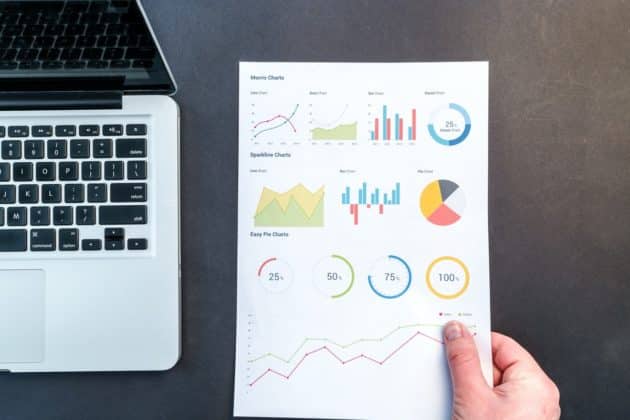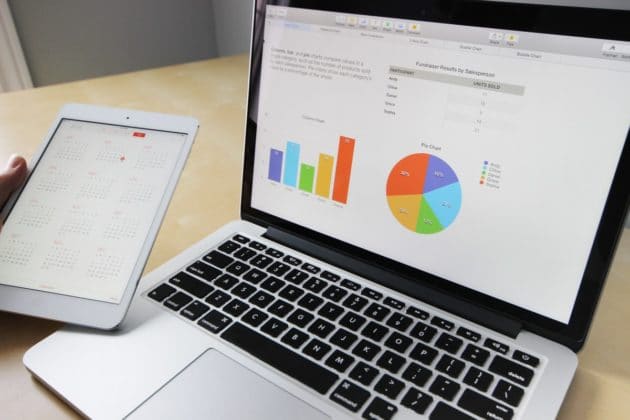Do you know what is Data Collection? Data collection is a key factor in ensuring the success of your business or organization. It provides actionable insights that help garner faster results, improved productivity, effective services, and most importantly – a return on investment.
The process involves collecting data concerning your consumers, such as the name, age, preferred services, location, search queries, and the ads the consumer mostly clicks on.
The purpose of Data Collection

There are many reasons that one should consider the act of Data collection. By incorporating data collection experts, your business or organization is better equipped to,
Recommended for you: Ultimate Guide to Data Lifecycle.
1. Probe, attract, and retain the right customer
Have you ever clicked on a certain page online and been asked to Accept cookies? Once you accept, your data is being collected (necessary or all, whatever you choose to permit). This is a significant method of data collection by businesses such as yours that helps you get information that drives you towards your target audience.
Moreover, the information can help in search engine optimization marketing. Your ads can reach your target audience through certain marketing methods available online. The more data you collect the more is the number of potential customers. Once you gather it, the data helps you provide them with offers, promotions, payment methods, services, and products that impress them. This attraction with actual benefits leads your prospect into becoming a regular customer.
Hence, this helps maintain consumer loyalty.
2. Reduce doubts and risks involved in decision making
Collecting data generally helps you understand the performance of a given aspect. For example, the trends in which certain products are sold, during which season, and preference. One strategy cannot last forever. At times it has to be changed and modified according to the changing needs of your customers. Experimentation is necessary and wrong decisions can take place anytime.
Therefore, if you find that your sales have been down with a new strategy, you do have an advantage of previously collected data. With that you have a certain strategy that was effective for a certain period and hence, you can confidently switch to that strategy again. Moreover, you will be able to access the risks from an informed point of view. This helps you to overcome your doubts and helps you grow further.

3. Facilitate the enhancement of your marketing strategies
“The right marketing strategy should attract new customers, maintain current ones, and at the same time ensure a return on investment. Thus, as a savvy business owner, you need to know what your target audience wants and the best way to entice them.” – as nicely explained by Phoebe Yao, the Founder & CEO of Pareto, in one of her recent interviews.
Data collected, e.g., the products that are mostly clicked on, helps you to motivate the consumer further to buy that product or service.
For instance, you have an online shop, and a certain customer constantly searches for a certain type of shoes. Having this information is an advantage where you can improve your marketing strategy. Now, you can constantly send them more types of shoes and offers, discounts, and notifications regarding sale deals encouraging the client to purchase the shoe.
Thus, collecting data enables the organization to tweak aspects of their undertakings and marketing strategies to fit the customer needs.
4. Meet consumer expectations through personalization
Consumers tend to feel more valued and appreciated when the communications from the businesses to them are quite personalized. This makes them feel important and wanted. For example, when disseminating information or promotions via email or messaging, you can address your customers with their names as a business. This can be done effectively if and only when you have the data related to their personal information. Such data on these customers let you know how best to address them and will also influence your decisions while dealing with them.
Once you make a personal connection with the customer, he will keep returning if you keep that connection maintained. Consumers then expect you to fulfill their needs and with this connection, they’ll allow you to openly fix their problems with your product or services.
5. Improve performance and efficiency in operations
Data collection helps you track your company’s performance and compare it with the goals you had set. Therefore, you can successfully optimize the non-managed areas that affect your profits. Accurate data that has been well analyzed and processed using digital means helps save time and reduce the risk of human errors. The data, if properly stored, can be used for reference in the future, such as to make predictions.
Moreover, if it is not only properly stored but properly segregated according to your different products or services it helps you manage your services better. You need to know the different types of customers and club them into groups of services that are suited and useful to them. This way you know how to operate according to a certain group of people to be able to help them at their best. This helps your process and progress, both to be smooth.

6. Enhance financial management in the organization
The collection of data and proper management of this information give insight into the company’s revenue and expenditure. The data that you have collected does not only tell you to work on the areas that are profiting more but also on the areas of your business that are at a loss. For instance, if a certain sector is underperforming, more resources can be driven towards its revival.
If your current strategies for those sectors are not working, you need to keep changing, enhancing, and/or modifying the strategies until they start producing your desired profit. The data collected, thus, helps in better management of the available resources and also suggests the addition of new and required resources. A business needs to focus equally on its profit and loss to create a balance out of both which would eventually result in positive growth.
You may like: How Peer-To-Peer Proxy Networks Keep Big Data Honest?
7. Influence and encourage informed problem solving
There are instances where an organization gets a backlash, such as a mix-up in deliveries or payments. A business is not easy to run, and such backlashes can occur at any time. It is normal but should not occur on a repetitive basis. Supposedly you do not have a proper arrangement of your data; it is going to create nothing but chaos. Without sorted data, your problem will consume a lot of time in getting fixed. The more time you take to fix your customers’ grievances, the more unlikely he is to return.
But, once you have accurately stored and managed data, it can help you sort this problem out fast and efficiently. You would have a solution beforehand and it would be less time-consuming for your customer too. The earlier you solve their problems, the more legitimate they’ll think of your services. In case of a problem in one department or across different ones linked together, the easily available data can inform the solution of the issue.
Methods of Data Collection

Now you know the benefits that data collection can bring to your business. But you should also know the numerous methods through which data can be collected in general. It normally depends on the type and target audience of the organization.
The data is collected in a set of two types:
1. Collection of Primary Data
Primary data is first-hand data and is collected directly from the users/customers by the organizations through different specific techniques. The type of data collected through it is either qualitative or quantitative.
Qualitative data is mostly contextual. Mostly contains measures that are not quantifiable. Several methods to collect this type of data are:
- Observations: It is where analysts observe people and their behavior at an event or in their natural surroundings. This is done to understand people’s needs or reactions to a certain event in their natural setting.
- Interviews: Interviews are one-on-one interactions with the users where they are to address a couple of questions. It can be an in-person interview or a telephonic interview where people where a discussion happens regarding a particular issue, product, or organization.
- Surveys: Several types of surveys can take place. Door-to-door surveys, where an analyst visits different places in a neighborhood and directly converses with people to collect data. Or online questionnaires, with short, crisp, and less time-consuming questions are asked that are either mailed or are present on the website of the organization. Email marketing and many marketing software come in handy while collecting data through surveys.
- Social Media: Tracking your engagement on social media is also a good way of data collection. You can keep a check on how and what type of people are engaging with your content or giving feedback for your products. Search for influencers with your target audience and use influencer marketing to look out for more prospects.
Quantitative data is purely numeric in nature. It is used mostly to receive answers to close-ended questions about the organizations. Various calculations such as mean, median, and mode are also used to segregate the type of data that is being collected.

2. Collection of Secondary Data
Secondary data is the second-hand data basically collected from other organizations. Hence, it is also the data that is already being analyzed. Like the primary data, it does not have any specific collection method. The collector refers to various data sources. These can be:
- Historical documents,
- Public records,
- Trade journals,
- Business reports,
- Customer/retailer feedback,
- Customer personas,
- Published government records,
- Sales reports,
- Casual internet.
You may also like: Top Tips for Protecting Customer Data.
Conclusion

Data collection is an essential role player in businesses and organizations such as eCommerce businesses, healthcare companies, government agencies, education institutions, and so on. The data facilitates understanding of economic indicators, employment trends, educational assessment, digital marketing analytics, marketing metrics, reports, and information systems. The extent to which data collection is beneficial to a company is infinite, but most importantly, it ensures informed decision-making, strategizing, problem-solving and efficient operations.





